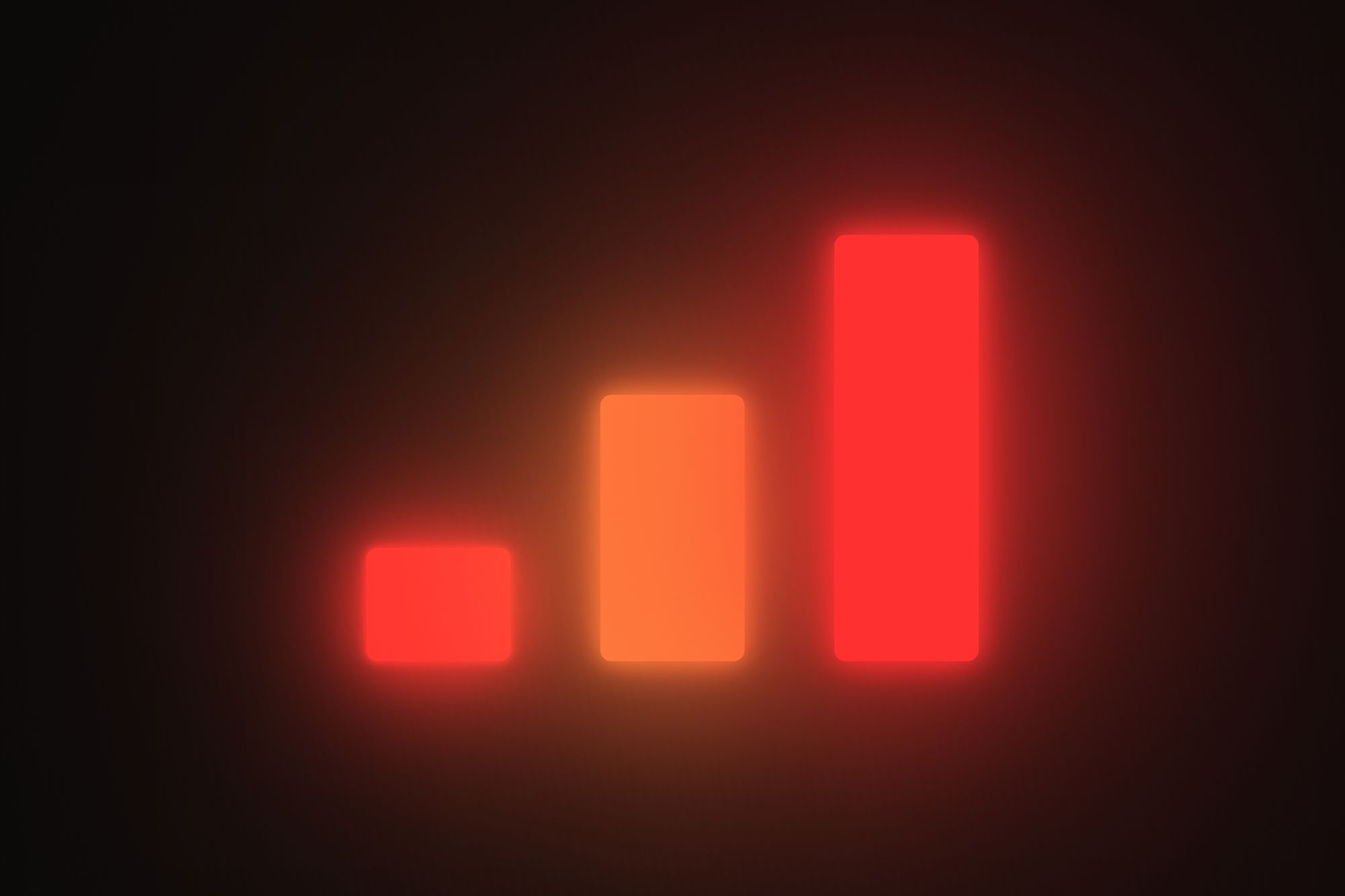If you are not up to speed on what a Chord is and why it’s an important and useful idea, then you may want to start with the article on Chords first before reading this one. If you are coming from there, then welcome :-)
Definition
In the world of chords, Triads get their own mention because they are so ubiquitous. At the end of the day they are just a three note chord, but with particular principles and most importanlty, a shared understanding among almost all musicians. This shared understanding is based on the following traits:
A Triad consists of three notes
A Triad is built by stacking 3rds
…and that is pretty much it.
One could argue that any three notes played together would constitute a triad, and depending on who you ask, this is indeed the case. But what is most likely the case is that a much greater majority of people will consider triads to be three note chords using the interval of a 3rd to build with. So the following chord:
C
F
Bb
…would not be considered a ‘triad’ by most because the notes are each spaced a 4th apart, rather than a 3rd. There is another term that some might use to describe a chord that has three notes but does not use 3rds for it’s spacing, and that term is that of a Trichord. To some a Triad is a three note chord built using 3rds and a trichord is any combination of three notes, built using any variety of intervals.
We will see situations where this might be the case, although there might be another explanation as well. Take the following chord:
C
G
Bb
One might say it’s a mixed spacing trichord where the first two notes are a 5th apart and the second two notes are a third apart. But another analysis might suggest that this is a 7th chord, but one that is simply missing one of the notes. In this particular case, the 3rd in between the root and the 5th is missing. If we were to fill it in with a 3rd of our choice, either major or minor, then we would have a fully voiced 7th chord, in this case, a minor one:
C
G
Eb
Bb
7th chords can be viewed as triads with an added note, making them four note chords, rather than three note chords. If you want to explore them in more detail, then head over here to the 7th Chords article.
And Now, a quick word from our sponsor:
Syntorial
Learn MoreThank you, and now back to our content...
Triads (5th Chords)
A triad is a chord with three notes in it. Since we are working with tertiary harmony then the notes of a tirad are a 2rd apart from each other. You can think of the distance in absolute terms or you can think of it within the context of a scale.
Minor Triads
Minor triads consist of the intervals of a Minor 3rd and a Perfect 5th. Here feel a little dark, somber, melancholy, contemplative, saaaaad, I suppose. One might also think of them as sounding seductive, sexy, mysterious, and just a little aloof. They are quite prominent in certain styles of music, and our foundational to all styles of music. Here is an interactive component which contains all twelve minor triads, and also includes two spellings of most chords based upon the spelling of the starting note chosen. Click on a note name to see that particular triad.
1 Select a Root Note
G2
C
G
Eb
C4
B4
You will notice that the interactive component above shows two spellings of most chords, based upon altering the root notes name. For example, the very first chord is C Minor, but can also be adjusted to read as B# Minor. This is intentional, as I find it useful to show what is possible. But one of the answers to spelling these chords is generally preferable, because it will be simpler to understand and will avoid any unfortunate note alterations, like double sharps and double flats.
Major Triads
Major triads consist of the intervals of a Major 3rd and a Perfect 5th.
1 Select a Root Note
G2
C
E
G
C4
B4
We can now compare the major and minor traids together on the keyboard and their patterns in action. Select the root note C and then select the quality of major to see the C Major Traid. Then swtich to the quality of minor and watch the chord change. Only the note in the middle will be different. The note on the bottom and the note on the top will remain the same.
1 Select a Root Note
2 Select a Chord Quality
G2
C3
C4
B4
Diminished Triads
The Diminished Triad consists of the intervals of a Minor 3rd and a Diminished 5th.
1 Select a Root Note
G2
C
Eb
Gb
C4
B4
1 Select a Root Note
2 Select a Chord Quality
G2
C3
C4
B4
These first three types of triads are the most common in tonal music, because all three of them are diatonic to all Major and Minor key signatures. In Fact, in every major and minor key, there are three amjor triads, three minor triads, and one diminished triad. This is always true. But there are more than just major and minor scales in tonal music. There are, in fact, a buuuunch of different scales, although they do vary in popularity.
Harmonic Minor Scale
The next most popular scale would be the Harmonic Minor Scale. This scale is only slightly different than the original minor scale that we know, but that difference does indeed introduce a new type of triad. This triad is called the Augmented Triad.
Augmented Triads
The Augmented triad consists of the intervals of a Major 3rd and an Augmented 5th.
1 Select a Root Note
G2
C
E
G#
C4
B4
1 Select a Root Note
2 Select a Chord Quality
G2
C3
C4
B4
Transformations
When it comes to diatonic harmony, we can do things to our triads to make them different. We can substitute notes, we can alter notes and we can exten the harmony by adding more notes.
Substitution
Suspended 4th Triads
A suspended 4th (Sus 4) triad consist of the intervals of a Perfect 4th and a Perfect 5th. It is derived by removing the 3rd from either a major or minor traid and replacing it with the note a perfect 4th away from the root of the triad.
1 Select a Root Note
G2
C
F
G
C4
B4
The most basic pattern for creating a sus 4 triad is to start on the root, then move up 5 steps, then move up 2 more steps from there.
Suspended 2nd Triads
A suspended 2nd (Sus 2) triad consist of the intervals of a Major 2nd and a Perfect 5th.
1 Select a Root Note
G2
C
D
G
C4
B4
Alteration
Major (b5)
Check out this chord:
C
E
Gb
It is not diatonic to any of the most popular scales and deviates from the pattern of using 3rds to space out the notes in the harmony, unless you consider the second interval to be a diminished 3rd, which is enharmonically equivalent to a major 2nd. This kind of chord starts to crack the foundation of the triad as a general concept a little bit, as context will define what something like this could be.
Extension
The last way to change the notes of a chord is to extend it by adding more notes. This concept leads us out of triads and into new and exiting territory…7th chords, etxtended chords, altered and extended and substitued chords…the list goes on and on…but by it’s very difinition, extending a triad makes it no longer a triad anymore, and something else…
…but to wet your whistle a little bit, let me introduce one such type of chord right now, just to get you a little bit excited for what’s possible…
6th Chords
Now we move into chords with four notes in them. We will start with 6th chords, which have an extra note added to them that is the interval of a 6th away from the root. You will notice that the interval used for the 6th is the same for both of these chords.
Minor 6th Chord
A Minor 6th chord consists of a Minor 3rd from the root, a Perfect 5th from the root, and a Major 6th from the root. We use a Major 6th rather than a Minor 6th because a Minor 6th creates too much dissonance against the Perfect 5th right below it to be stable enough to use for any length of time. The Minor 6th wants to be resolved to the Perfect 5th rather then exist next to it for any length of time.
1 Select a Root Note
G2
C
G
A
Eb
C4
B4
Major 6th Chord
A Major 6th chord consists of a Major 3rd from the root, a Perfect 5th from the root, and a Major 6th from the root. Both minor and major 6th chord use the interval of a major 6th, because this interval is a whole step above the 5th, and we are generally looking for this kind of stability in our chords when creating harmonies.
1 Select a Root Note
G2
C
E
G
A
C4
B4
Keep going and check out 7th Chords to see what we can do when really start to get our hands dirty by extending triads and adding complexity and richness to our harmonies.
7th ChordsIf you enjoyed this article and found it useful,
then please consider donating to support :-)
If you enjoyed this article and found it useful, then please consider donating to support :-)

